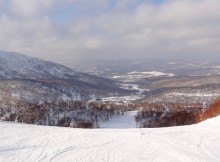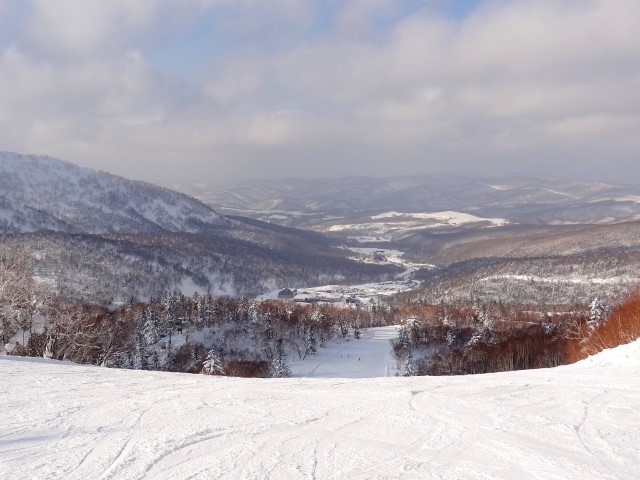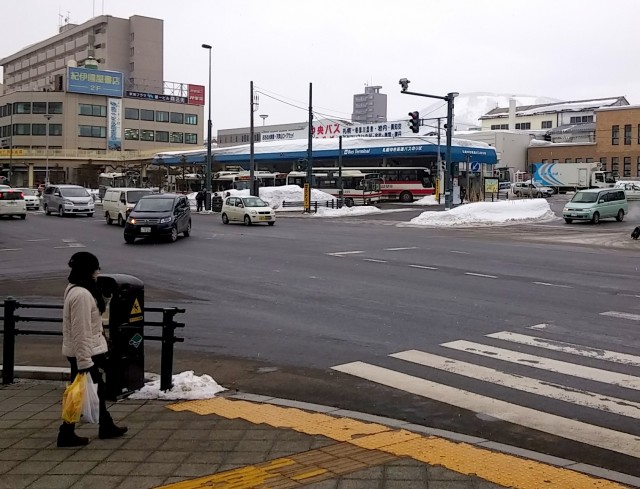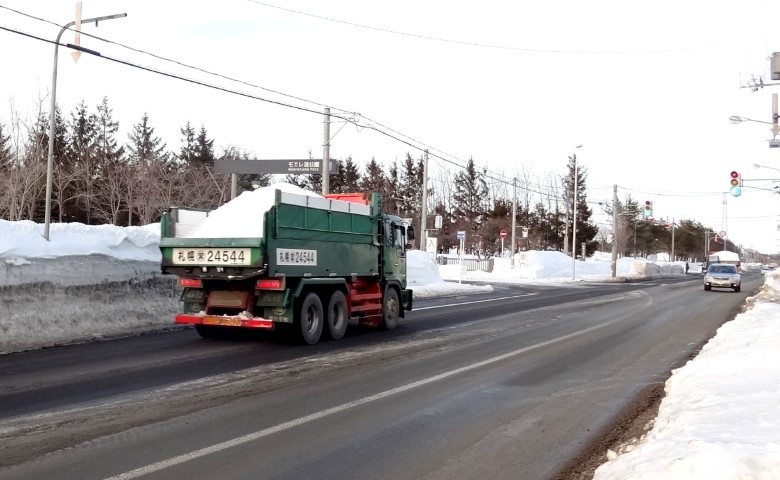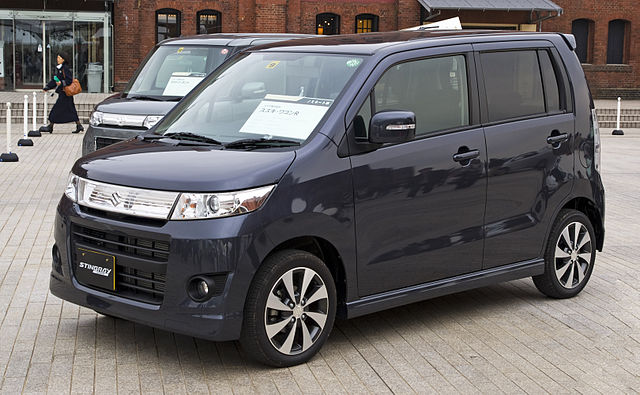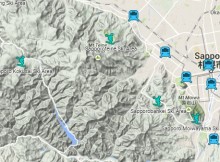The Working Holiday Visa is probably one of the best ways to visit Japan. It’s the best of both worlds – you can stay longer than on a tourist visa, and you can also get a unique insight to the country by working alongside the people of Japan.
The usual tourist visa for British citizens visiting Japan is three months. However, the Working Holiday Visa for Japan permits you to stay for up to a continuous period of 12 months.
I recently applied to work over the winter season in a Japanese ski resort, and the Japanese Working Holiday Visa was the obvious choice for me. Here, I will explain what this visa is, and how I applied for it.
This account was written from a UK point of view. Most of the information here is relevant to all countries on the Working Holiday Visa programme, but there may be some small regional differences, so be sure to check the website of your local embassy.
Step 1: Do your research – is the Working Holiday visa right for you?
Firstly, you have to ask if the Working Holiday Visa is right for you. Note that the application process is quite lengthy, so for a regular non-working holiday, it is infinitely easier to get the usual stamp in your passport on arrival.
Also note that the Working Holiday visa is not a replacement for a full employment visa. If you are going to Japan exclusively to work full-time, you are unlikely to have your application granted.
With that in mind, what are the criteria for applying? Here are the requirements from the Japanese Embassy in the UK:
- Be British Citizens who are resident in the United Kingdom
- Intend primarily to holiday in Japan for a period of up to one year from the date of entry
- Be aged between eighteen (18) and thirty (30) years both inclusive at the time of application for a Working Holiday Visa
- Be persons who are not accompanied by children
- Be persons who are not accompanied by spouses unless those spouses are in possession of a Working Holiday Visa or otherwise
- Possess a valid passport and a return travel ticket or sufficient funds with which to purchase such a ticket
- Possess reasonable funds for their maintenance during the period of initial stay in Japan
- Intend to leave Japan at the end of their stay
- Have not previously been issued a Working Holiday Visa (except where you were unable to use the Working Holiday visa issued due to unavoidable circumstances, and an application for
re-issue is made no more than 3 months from the expiry date of the original Working Holiday visa.) - Have good health
I have emphasised the main limitations.
The intention of the programme is to promote cultural exchange by allowing young people to spend an extended period in Japan. This is why there is a low age limit. It is also not suitable for family travel for similar reasons.
Notice how there is no requirement to actually work – perhaps surprising, given the visa’s name. The primary focus is to holiday, whilst using work to supplement your funds and as a method of integrating with the Japanese during your time there.
You are also required to have sufficient money to fund the first few weeks or so, as well as your return journey. The Embassy defines ‘possessing sufficient funds’ as:
-
Either £2,500 in cleared funds (last 3 months bank statements must be shown)
Or £1,500 and a return or onward journey ticket or a receipt for such.
Finally, each person can only use one Working Holiday Visa for Japan in their lifetimes. Use yours wisely!
Step 2: Prepare your documents
So you’ve decided that the Working Holiday Visa is right for you? Now, we need to prepare our documents. This can take a little bit of time – you may need to set aside a few hours for this.
This list of documents is taken from the official embassy page.
All documents need to be printed – ideally on A4 paper. Once you have prepared your documents, you will need to take them to the embassy in person to apply for your visa.
Passport
Must be valid for the entire duration of the visa – i.e. 12 months. Also, it is common practice for visa-issuing authorities to demand that a passport has another 6 months’ validity. So if your passport is due to expire within 18 months of your arrival in Japan, I would look into renewing your passport.
Also make sure that there are two blank, consecutive pages free.
Completed visa application form
This form can be a bit tricky to fill out. The ‘Visa Application Form’ is in fact a standard form that the embassy uses for all types of visa applications. From what I gather, it is not necessary to fill out every field, although the more you can complete the better.
For example, it asks for your port of entry, entry date, and flight number. Of course, if you haven’t booked your flight yet, you won’t have this information – and you might not want to book them until your visa is confirmed!
Similarly, you may not have any contacts in Japan for the ‘Guarantor’ or ‘Inviter’ fields.
In my case, I already had a potential job offer and my flights were already booked, so I can’t say for certain what would happen to your application if you left these blank. When you eventually submit your application to the embassy, you will be able to ask any questions there. Other accounts (see links at the end) seem to back this up – it’s not the end of the world if you can’t fill everything in.
One passport-sized photograph
This is purely for the embassy’s records – they’ll use your passport photo for the visa itself. Glue it on to your application form – no sellotape, staples or paperclips!
CV
If you are applying for a Working Holiday Visa, you are intending to work. If you are intending to work, you need a CV! Get it done now so it’s out the way.
Outline of intended activities
This is a concise list of your plans in Japan. Keep it short – a bullet point list of dates, regions and activities should suffice. Here was mine:
- Arrive in Sapporo at end of October.
- November – March: Living and working in Hokkaido. Working in a ski resort, and skiing during free time. Intending to work/stay in Niseko due to the demand for English-speaking employees.
- April (or at end of ski season): Free time in Japan. Intending to travel around Hokkaido, then around Tokyo, before flying back to the UK.
A written reason for applying for a Working Holiday Visa
If this visa is like applying for a job, then this would be the covering letter. This is where you get to explain why, for example, you want to visit Japan, what you will get from your time there, or how you might help UK-Japanese relations. This is where you convince the embassy official that you intend to use the opportunity provided by the visa to its fullest.
It’s also an opportunity to explain why you are applying for the Working Holiday Visa instead of a normal tourism or employment visa. Make sure you understand the benefits and limitations of this visa, and explain why it will allow you the best chance of fulfilling your plans in Japan.
Bank statements showing sufficient funds
You also need to send your last 3 months of bank statements. You need to show that you have enough funds (£2500 for a solo traveller) to cover your initial time in Japan.
Since I do all of my banking online, I don’t have these statements to hand. Instead, I logged on to my banking and printed the statements at home.
Why they want 3 months I don’t know. Maybe they want to see that you haven’t just borrowed money from family?
Note that borrowed money, such as overdrafts and credit cards, doesn’t count.
Step 3: Go to the embassy
As far as I know, you must apply at the embassy in person. You can’t apply by post, online, or by sending someone else for you. You can go to either London or Edinburgh – I went London. Make sure you have all of your documents with you.
You do not need an appointment. Just turn up during opening hours (and not right before closing time!). Tell security at the front door that you’re there to apply for a visa, and they’ll send you in the right direction.
In London, there was a waiting area where I collected a ticket and waited for my number. After only about 5 minutes, my number came up, and I walked through to the next room. There is a row of post-office-style counters.
A friendly young Japanese woman greeted me. I gave her my documents. She flicked through them all quite casually, like she was reading a magazine. She asked me a couple of simple questions (I had forgotten to fill part of my application form), but nothing at all challenging. She asked what I was going to do there (“oh, you’re going skiing? ワォォ!”) and if I’d applied for a Working Holiday Visa before.
She then stamped some documents, and gave me a receipt. She took my passport from me, and said to come back in one week. There would be a visa fee of £16 to pay on collection – to be paid in cash with exact change only.
As I understand, what happens in this week is that the application is sent to an official who will then approve or reject the application.
The receipt will be printed with your collection date. It is very important that you don’t lose this receipt, and you bring it with you to collect your passport.
Step 4: Pick up your passport
Picking up your passport requires a second trip to the embassy on your collection date, about a week after applying. This is a pain if, like me, you live hours away from the nearest embassy. You can send someone else to pick up your passport for this second visit though – follow the instructions on your receipt for how to do this.
This should be a very quick visit – just get a ticket and visit the visa window like before. Hand the staff member your passport receipt and the fee (in exact change!).
You’ll find your brand new visa pasted inside your passport!
Visa dates
The visa they gave me was dated as being valid until 13 October 2017 – apparently 12 months after my application was processed in Japan.
However, this date seems to be the latest you can arrive in Japan and register your residency (in the next step) – not the date you must leave Japan. When I registered in Japan, my residency card was dated to expire on 29 October 2017 – 12 months after I arrived.
My understanding is that I am able to stay in Japan until my residence card expires, i.e. on 29 October. I am not entirely sure here. If you are likely to be cutting it fine with your leaving date, I would advise you contact the embassy for clarification.
Step 5: Arrive in Japan
Have a safe flight!
On the arrivals card (given to you on your flight, if not you’ll find them in the airport in immigration), for ‘purpose of visit’ I selected ‘other’ and wrote ‘Working Holiday’.
At immigration in Japan, take the foreigners queue. The immigration official will give you a credit card-sized Residence Card. Keep it safe!
They will also staple a piece of paper entitled ‘Designation’ in your passport. Your employer in Japan will need a copy of this too.
Step 6: Register your residency
You’re in Japan now – are we not done already??
There is one final step. Within 2 weeks, you need to have gone to the local Government Office to register your residency.
You need an address in order to register. This is why it’s helpful to already have an employer by this point, but I assume you could use a hotel address if it’s all you have.
It’s helpful to have a Japanese speaker with you when you visit the government office, though it isn’t essential. If you’re in an area popular with foreigners, the staff may have some basic English ability, and the forms you need to fill are bilingual anyway.
How do I find my government office?
All cities and larger towns have a government office.
Perhaps the easiest way is to go to Google Maps and search in your area for 役所 (Japanese for Government Office).
More information
The Working Holiday Visa for Japan is available to citizens in a number of countries around the world. This official page lists the 16 participating countries: Australia, New Zealand, Canada, Republic of Korea, France, Germany, UK, Ireland, Denmark, Taiwan, Hong Kong, Norway, Portugal, Poland, Slovakia and Austria.
Here are some other blog posts from around the web of other people who have applied for a Working Holiday Visa.
